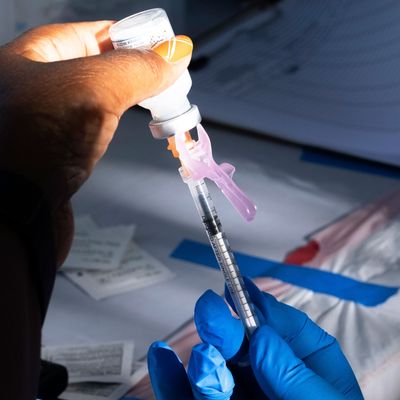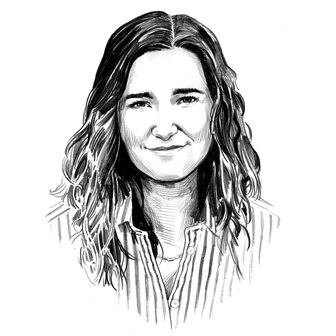
Last week, the FDA authorized an updated COVID-19 booster for anyone 12 and older, the first shot to be updated since the vaccines were initially approved and released in 2020. The booster shot, also referred to as a “bivalent” booster, was redesigned in hopes it would more specifically target Omicron subvariants, now the dominant form of COVID in the U.S. (With the new booster’s approval, the previous booster formula — a smaller dose of the original vaccine — was discontinued.) The formula is a combination of the original vaccine formula and a new one that targets Omicron variant BA.5.
Although it’s believed that the Omicron variants produce an overall milder form of COVID-19, they are also far more transmissible than earlier versions, prompting some concern that another surge in cases — and therefore more hospitalizations and deaths — is possible come fall and winter, when more people spend more time indoors, facilitating increased transmission. COVID case counts remain high throughout much of the country, though hospitalizations have decreased 10 percent since early August and remain far lower than last summer’s Delta surge or the Omicron wave last winter. As more time has passed, the country has also gained heightened immunity through both vaccination and prior infection; it’s estimated that 95 percent of Americans over the age of 16 now have some level of immunity.
Because immunity has increased as hospitalizations and deaths have decreased — and because the bivalent booster has yet to be tested in human subjects — experts are divided as to how effective they will be. Only 30 percent of Americans received a first booster shot; it’s unclear how many are likely to opt into a second, particularly given widespread vaccine hesitancy, fewer COVID restrictions (which might prompt behavior change), and depleted federal funding.
To learn more about the bivalent booster, the Cut spoke to Paul Offit, the director of the Vaccine Education Center at the Children’s Hospital of Philadelphia, who’s been critical of the new booster’s approval, and Mercedes Carnethon, the vice-chair of research in preventive medicine at the Northwestern University Feinberg School of Medicine, who’s voiced her support for it.
Why wasn’t the bivalent booster tested in humans before approval?
Basically because public health officials voted to move forward with approval before there was time to complete human trials.
Although Anthony Fauci, the head of the National Institute of Allergy and Infectious Diseases, has compared the COVID-booster redesign process to what’s done every year with the flu shot — which doesn’t require human testing in order to be updated — Offit disagrees. “We’ve been giving flu vaccines since the 1940s, so we have a lot more experience with flu vaccines,” he explains. Flu vaccines are also made with older, more familiar technology, while scientists are “still learning” how COVID immunity develops, he says. And while we know the initial COVID vaccines to be very safe, they are not 100 percent without risk. “The rare side effects of the initial vaccines are acceptable because you have clear evidence of benefit,” he explains. “But absent clear evidence of benefit, I don’t think it’s fair to ask people to take a risk which is unknown and theoretical but still possible.”
Carnethon argues that the urgency of the nation’s COVID situation — particularly heading into colder months — warrants the booster being approved without human data. “A lot of what we learn with the vaccine does come from what we call the phase-four trial, which is the rollout in the population,” she says. “There’s no evidence that I’m aware of that it would cause harm, and it appears in the animal trials that the antibody response was sufficient to justify moving forward.”
What is the likely benefit of the bivalent booster?
Because the booster has not yet been tested or widely administered in humans, we don’t know exactly what the benefit will be — which is part of the reason for Offit’s hesitancy, he explains. “The data that were presented to us on June 28 at the FDA Vaccine Advisory Committee were not compelling,” he says. “What we saw was not likely to be a clinically significant difference” in protection.
The best-case scenario for the new booster shot, says Offit, is that people at higher risk boost their “neutralizing antibodies for three to six months.” But the size of that boost is unclear, and according to Offit, it’s unlikely to make a significant difference in people who are otherwise at low risk for serious disease. (More on how the booster may impact higher-risk folks below.)
According to Carnethon, even a modest short-term benefit makes the booster shot worth pursuing. “Three to six months will cover the winter months. That’s precisely what we need right now,” she says. “Then we can reevaluate next summer whether or not this particular modification needs to again be revamped because the virus will continue to mutate.” Still, people who get the bivalent booster should not consider themselves totally immune. “We don’t think that this will prevent infection,” adds Carnethon. “We think and hope that this will prevent severe disease.”
Who should get the bivalent booster?
Most experts agree the booster is most likely to provide measurable added protection to people at higher risk of serious disease and death. “People who are hospitalized with COVID despite getting two or three doses fall into one of three categories,” says Offit: people over 75 years old (who can’t form as strong an immune response), people with chronic illnesses, and people who are immunocompromised.
These groups, says Offit, “can’t handle a mild illness well; therefore, when you get a booster dose, and you increase your neutralizing antibodies for three to six months, that may keep you out of the hospital.”
Carnethon, too, is most hopeful about the potential benefit to at-risk groups. “What I hope that we will see is that we can keep more people out of the hospital and keep those with chronic diseases better protected because the reality is that the death rates from COVID-19 are stubbornly high,” she says. “It is the third-leading cause of death in the United States.”
Experts disagree as to whether young and/or otherwise healthy people need to get an additional booster, but Carnethon seems resigned to the fact that most won’t. “So many people have seen people contract COVID and recover,” she says. “It’s a relatively smaller proportion of the population who have experienced the personal loss of somebody from COVID-19, though it feels strange to say that when COVID-19 is the third-leading cause of death.” For these reasons, she says, she expects a low proportion of people to pursue a bivalent booster shot — perhaps even fewer than the 30 percent of Americans who obtained the first.
Will we have to get COVID boosters forever?
We don’t know. Fauci said COVID vaccines will likely shift to an annual-shot model, similar to the flu shot, despite the fact that boosters’ protection against symptomatic infection wanes within three to six months. (Notably, flu-vaccine participation typically hovers below 50 percent among adults.) But as the virus continues to change, vaccines will need to be updated accordingly, and we don’t yet know what that might mean six months in the future.
Offit is already concerned about “booster fatigue” given low rates of participation: “You really need to focus on those who are most likely to be hospitalized because the notion of vaccinating everybody to try and keep down transmission, to try and generally prevent all symptomatic infection, is just not going to happen.” Some amount of mild illness in circulation is, he says, unavoidably part of life now — not just because we’ve rolled back mitigation efforts but because COVID is a highly infectious disease with a short incubation period.
“I think we will learn to live with this virus, and much the same way we live with the flu,” says Offit. “If people asked me what to do this winter, my general recommendation: Make sure you get your flu vaccine. Two years before COVID entered the country, there were 800,000 hospitalizations from influenza and 60,000 deaths, but we accept that. We grandfathered in influenza, and we will eventually grandfather in this virus.”


